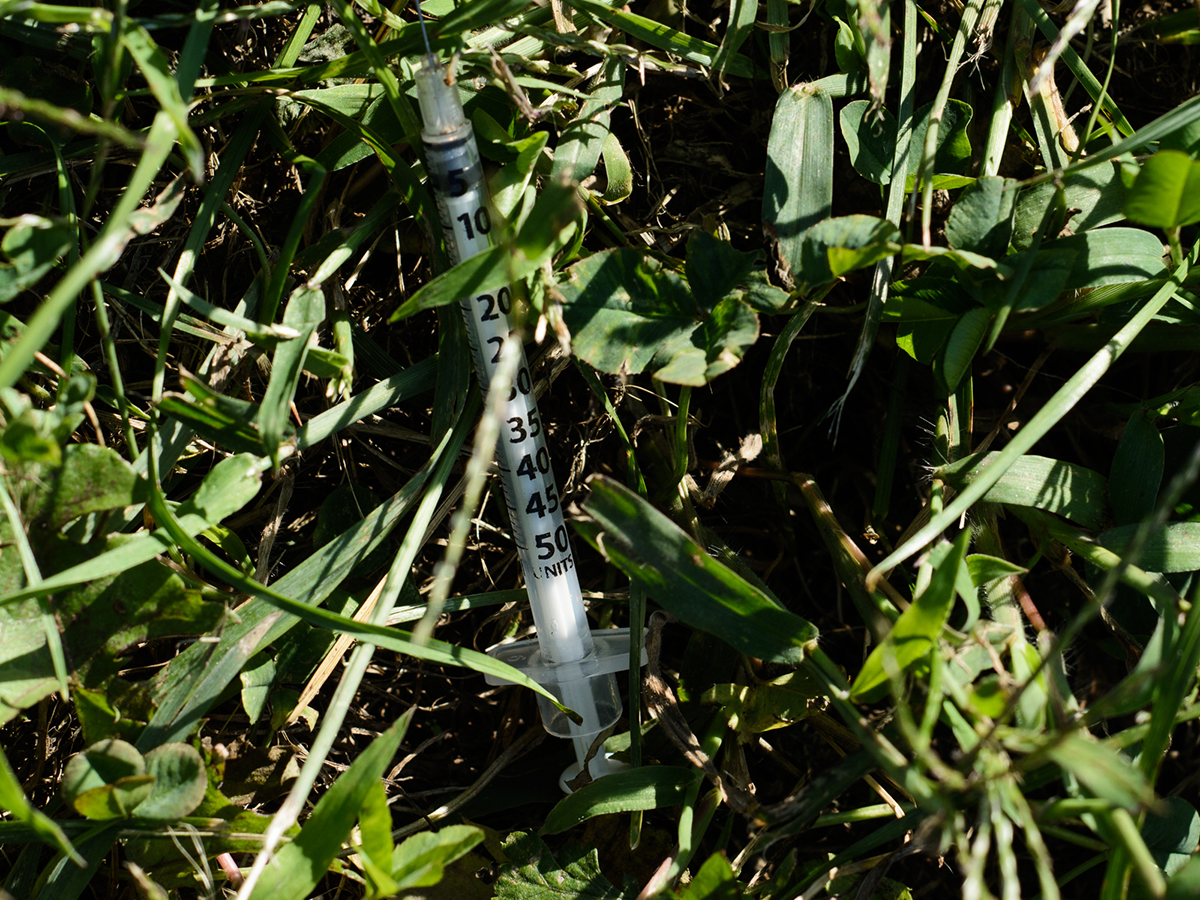
The plan was simple: City agencies would coordinate with harm reduction organizations for a seamless and dignified shutdown of Mott Haven’s notorious outdoor drug den, known to its denizens as The Hole. Instead, when harm reduction organizations such as BOOM!Health arrived, the raid was complete and aftershocks reverberated for months throughout the community.
Thoughtful planning was already in motion long before the The Hole’s D-Day in May, but it was scrapped by City Hall in favor of immediate action after The Daily News ran a special report called “The South Bronx ‘Shooting Gallery.’” Published last year on May 20, the exposé revealed the hidden lives of drug users in the South Bronx—and exposed the condition of the concealed habitat known as The Hole, and its residents. The city’s expedited action was in direct response to the article, according to a source inside the 40th Precinct.
Within days of the article’s publication, city agencies swarmed the abandoned railroad tracks, overgrown with weeds and blanketed with used hypodermic needles, the orange caps ranging in color from faded sand to vibrant tangerine. Three residents of the underpass were cuffed while NYC Health and Sanitation bulldozers cleared the hangout that some called home.
Both public and private sector organizations are responsible for the strip of land dubbed The Hole—the rails, bridges and parking lots are all managed by different entities. It’s unfair to pin the burden entirely on the police force when multiple agencies share the duty, according to a source inside the 40th Precinct.
“I don’t think it’s safe to have a place where people can congregate to do something that’s dangerous,” Mayor Bill de Blasio said to The Daily News in a follow-up piece. “I believe that’s the right strategy, to constantly limit the places where people can engage in illegal and dangerous activity.”
The city has shut down this exact spot in years past, giving the location a recurring lifecycle of dwelling, closure, return.
“We launched an aggressive cross-agency effort that builds upon our previous work to keep this area clear, neighborhood safe and connect those struggling with substance abuse disorder to care,” said Olivia Lapeyrolerie, the Mayor’s Office Deputy Press Secretary.
Skeptics, including a police officer, said the mayor was annoyed during a visit to The Hole last year when Sanitation cleaned up needles prior to his arrival, ruining a photo-op.
Almost every community touching the heroin crisis says the attention exacerbated the situation for local users and people who serve them, according to an employee at Boom. The exposé revealed names and faces in text, photos and video, including those of Leidanett “Lady” Rivera.
Now, much of the 39-year-old’s family—as far as Texas—knows how she spends her days, needles and all.
The raid also forced narcotics users further into the public eye. Now, St. Mary’s Park is a popular hangout, as is the quiet street behind Lincoln Hospital.
In early December, Rivera’s friend Chino collapsed in St. Mary’s Park from a cocktail of drugs. Concerned but not surprised, Lady quickly administered Narcan alongside two journalists from this publication.
Another heroin user who frequents St. Mary’s shed light on the bureaucratic battle that those who seek detox and recovery sometimes face. Swift action is critical once the decision to become sober is made, yet the current system failed Juan, a heroin user, several times when he expressed a desire for medical attention. He doesn’t have insurance. As a result, he feels like he faces bigger hurdles.
While the streets and parks of Mott Haven have a history of being strewn with needles, many users today take time to pick up syringes. One motivation is access to needle exchange programs in the neighborhood. The movement started almost 30 years ago when Rev. Dr. Luis Barrios saw a pregnant Joyce Rivera, on a snowy night, giving away clean needles out of the trunk of her car. He invited her into his church that night, and the pair teamed up to provide the population with clean needles out of the church basement.
The way police fight the war on drugs is also transforming. Transactions are becoming mobile, and selling today is often behind the scenes instead of on the street corner. According to one officer, hand-to-hand business is vintage, and the “dead drop”—leaving money in one place and drugs in another separately, is the present—and the future.
In years past local politicians, including Bronx Borough President Ruben Diaz Jr., have suggested a permanent solution for the tracks that comprise The Hole as a “Lowline” park. But, for now, locals say it’s only a matter of time before former inhabitants start to drop back in.
Read our special series Opioid Addiction: Local Face on a National Crisis

